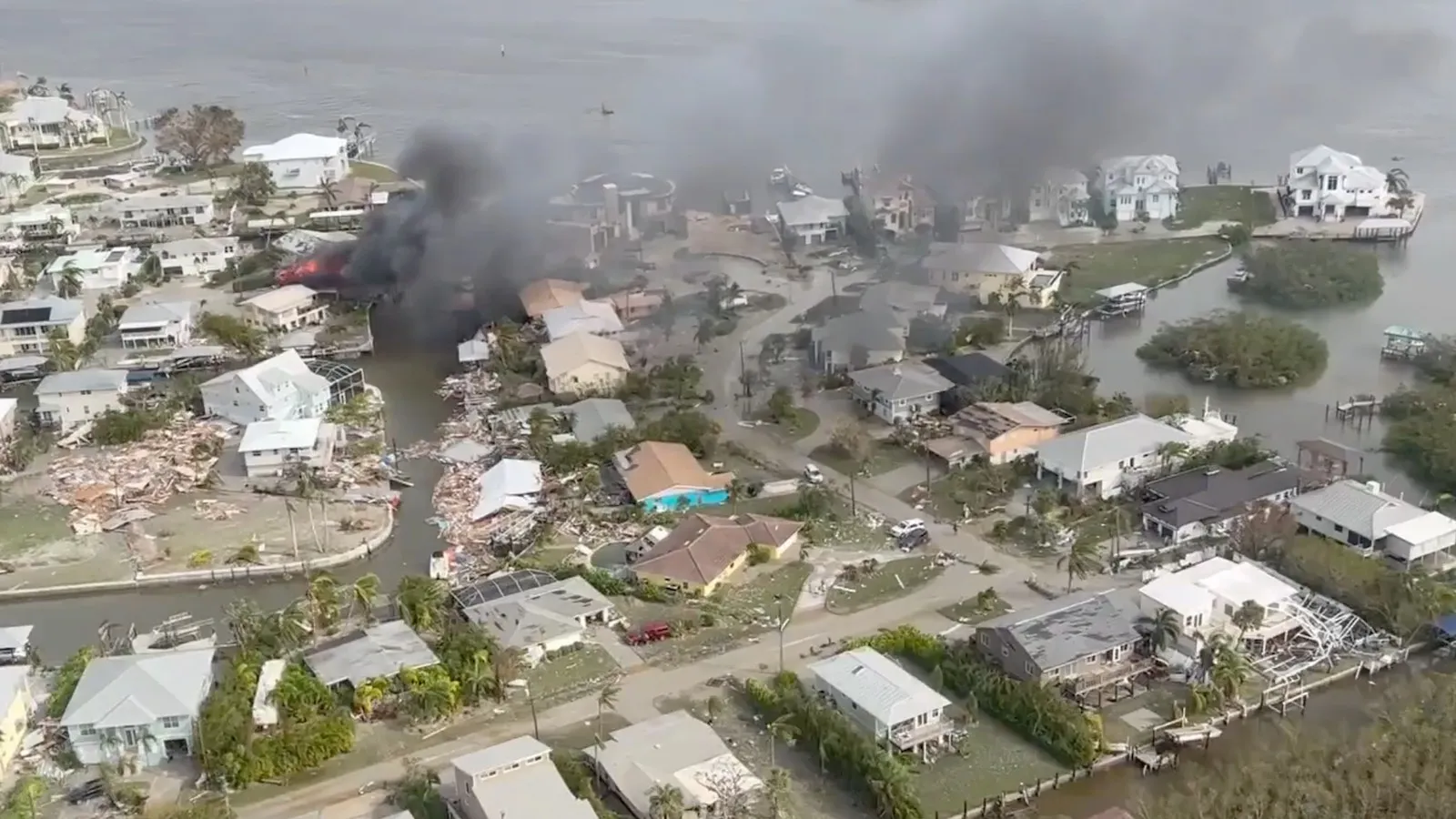Introduction
Cape Coral Hurricane Ian, a powerful tropical cyclone, left a lasting impact on Cape Coral, a city located on the Gulf Coast of Florida. In this article, we will explore the devastating effects of Hurricane Ian, the measures taken to prepare and respond to the storm, and the long-term consequences faced by the community. Let’s delve into the story of Hurricane Ian and its aftermath.
Understanding Hurricane Ian
What is a hurricane?
Hurricanes, also known as tropical cyclones, are intense storms characterized by strong winds and heavy rainfall. These storms originate over warm ocean waters and can cause significant damage when they make landfall.
The formation of Hurricane Ian
Hurricane Ian formed as a result of favorable weather conditions, including warm sea surface temperatures and low wind shear. These factors allowed the storm to strengthen and develop into a powerful hurricane.
The intensity of Hurricane Ian
Hurricane Ian quickly gained strength, reaching Category 4 on the Saffir-Simpson Hurricane Wind Scale. With sustained winds exceeding 130 miles per hour, the storm posed a significant threat to Cape Coral and the surrounding areas.
Impact of Hurricane Ian
Destruction of infrastructure
As Hurricane Ian made landfall, it unleashed its fury upon Cape Coral, causing widespread destruction of infrastructure. High winds toppled trees, damaged buildings, and brought down power lines, leaving the city in darkness.
Flooding and storm surge
The storm surge associated with Hurricane Ian led to severe coastal flooding. Low-lying areas of Cape Coral were inundated, causing extensive damage to homes and businesses. The torrential rainfall further exacerbated the flooding, overwhelming drainage systems.
Power outages and communication disruptions
The strong winds and fallen trees knocked out power lines, resulting in widespread power outages throughout the city. This, combined with communication disruptions, made it challenging for residents to receive timely updates and seek assistance.
Preparing for Hurricane Ian
Emergency preparedness
Recognizing the potential threat posed by Hurricane Ian, the local authorities and residents took proactive measures to prepare for the storm. This included stocking up on essential supplies, securing property, and developing emergency plans.
Evacuation orders
To ensure the safety of residents, mandatory evacuation orders were issued for low-lying and vulnerable areas. Evacuation centers and shelters were established to accommodate those in need of a safe haven.
Hurricane Ian and Climate Change
Climate change and hurricane intensity
The intensification of hurricanes like Ian raises questions about the role of climate change. While it is challenging to attribute a single storm solely to climate change, warming ocean temperatures and altered weather patterns contribute to the increased intensity and frequency of hurricanes.
The need for climate resilience
The impact of Hurricane Ian highlights the importance of building climate resilience in coastal communities. It underscores the necessity of adaptation measures, such as improved infrastructure, early warning systems, and sustainable development practices.
Emergency Services
First responders and volunteers
During the aftermath of Cape Coral Hurricane Ian, emergency services played a crucial role in providing immediate assistance and rescue operations. First responders, including firefighters, police officers, and medical personnel, worked tirelessly to aid affected individuals.
Community support and volunteer efforts
The strength of the community shone through as residents rallied together to support one another. Countless volunteers offered their assistance, providing food, shelter, and emotional support to those affected by the storm.
Infrastructure Damage
Rebuilding efforts
The widespread damage inflicted by Hurricane Ian necessitated extensive rebuilding efforts. Repairing infrastructure, including roads, bridges, and utility systems, required significant time, resources, and collaboration between government agencies and private entities.
Strengthening infrastructure for the future
The devastation caused by Hurricane Ian serves as a reminder of the importance of resilient infrastructure. Efforts to reinforce buildings, improve drainage systems, and fortify critical infrastructure can enhance a community’s ability to withstand future storms.
Economic Impact
Disruption of businesses
The impact of Hurricane Ian extended beyond the physical damage. Many local businesses faced temporary or permanent closure due to the storm’s aftermath. The loss of income and jobs had a significant economic impact on the community.
Recovery and economic resilience
While the road to economic recovery was challenging, the community of Cape Coral demonstrated resilience. Support from government programs, community initiatives, and the indomitable spirit of entrepreneurs played a vital role in rebuilding the local economy.
Community Resilience
Coming together as a community
In the face of adversity, the community of Cape Coral united, showing remarkable resilience and determination. Neighbors helped one another, and acts of kindness were abundant, fostering a sense of unity and strength during the recovery process.
Learning from experience
The experience of Hurricane Ian prompted the community to learn valuable lessons about preparedness and resilience. Local authorities and residents took steps to enhance emergency response plans, improve communication systems, and prioritize community safety.
Environmental Impacts
Ecosystem damage
The natural environment of Cape Coral suffered significant damage due to Hurricane Ian. The storm’s strong winds and storm surge disrupted delicate ecosystems, causing habitat loss and affecting wildlife populations.
Restoration efforts
Following the storm, efforts were made to restore and rehabilitate the affected ecosystems. Reforestation projects, beach nourishment, and wildlife conservation initiatives played a crucial role in preserving the natural beauty and biodiversity of Cape Coral.
Lessons Learned
The impact of Hurricane Ian on Cape Coral taught valuable lessons that will shape the future of disaster preparedness and response. The importance of early warning systems, resilient infrastructure, community support, and environmental conservation has become even more apparent.
Conclusion
The story of Hurricane Ian in Cape Coral serves as a testament to the resilience and strength of a community in the face of a devastating natural disaster. It emphasizes the need for proactive preparedness, climate resilience, and community unity to mitigate the impact of future storms.
FAQs
- Q: How long did Hurricane Ian last in Cape Coral? A: Hurricane Ian affected Cape Coral for approximately three days, with the strongest winds and rainfall occurring during the initial landfall.
- Q: Was Cape Coral the only area affected by Hurricane Ian? A: While Cape Coral bore the brunt of Hurricane Ian’s impact, neighboring coastal areas also experienced significant damage and flooding.
- Q: Are hurricanes becoming more frequent due to climate change? A: Climate change contributes to the increased intensity and frequency of hurricanes, but it is essential to consider multiple factors when analyzing storm patterns.
- Q: How can individuals contribute to climate resilience in their communities? A: Individuals can contribute to climate resilience by supporting sustainable practices, participating in community preparedness efforts, and advocating for environmental conservation.
- Q: What resources are available for hurricane preparedness in Cape Coral? A: The local authorities provide resources such as hurricane preparedness guides, evacuation routes, and emergency contact information to help residents prepare for storms.





